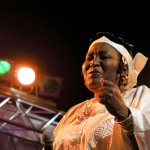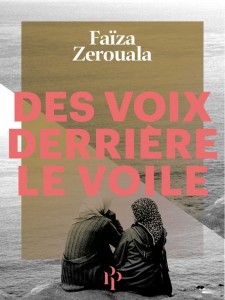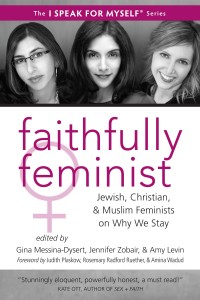Amy Waldman’s The Submission is a novel that struggles to tell “a post-9/11 story” with a potentially implausible concept and a cast of characters lined up as representatives of certain types and injected with nuance with varying degrees of success.
The title is a play on words, a speculation on ”what would happen if a jury in charge of selecting a ground zero-like memorial were to choose, from among the many anonymous submissions, a design that turns out to have been created by a Muslim-American architect.” And then what would happen if the Muslim-American architect stubbornly refused to set people’s fears at rest about his garden design being a “martyr’s paradise” leaving everyone to wonder about Islam and submission and taqiyya and conspiracy and paranoia at unprecedented levels?
Sound familiar? The novel, as this review points out, is remarkable for its uncanny prescience: ”Written largely before last summer’s Park51 ground-zero-mosque fiasco but published a year later, it accomplishes the rare feat of being prescient after the fact, a counterfactual novel that turns out to be accurate in all the details that matter.”
And the characters? Here’s what I mean by types, two by two:
There’s architect Mohammad Khan (“Mo”), secular American Muslim, and Asma Anwar, undocumented Bangladeshi immigrant, not so secular Muslim. And there’s Claire Burwell, sympathetic wealthy widow whose husband died in the 9/11 attacks, and Sean Gallagher, not so sympathetic, whose brother died in the attacks.

This is where the novel fails for me, the sense that it was planned out with representative characters meant to portray a spectrum of views, only to fail to transcend their representative role. But the novel doesn’t completely fall flat on its face. At its best it is a reasonably good page-turner with a few jarring notes that make you go “what?” but never enough to put down the book.
Example of a peculiar moment: “In America time was gold; in Bangladesh, corrugated tin.”
But the writing kind of flows, the multi-strand narrative is deft, and the focalizing characters more or less interesting, and more or less alive. Well, mostly. Not Asma Anwar. Most of the time, Asma’s about as alive as a cardboard cutout.
Asma is meant to be an undocumented Bangladeshi immigrant, and a twenty-one-year-old mother. She reads like a very young, very naïve child desperate for approval and attention, a gullible narrator who invites the reader to understand the world around her better than she does, hapless and helpless even when it comes to her own story. Basically, she is a narrator unable to narrate because we watch her, rather than read the story through her.
In this scene with the Iranian-American lawyer Laila, Asma reveals to the reader her own shock at the notion that she, Asma, is capable of actual thought:
Laila said that the government had promised that no information obtained through this process would be shared with immigration officials…
“‘Will they put in writing that this is not a trick?’ Asma asked, impressed by her own shrewdness. Laila’s smile suggested that she was impressed, too.” [emphasis added]
I imagine a thought bubble: “Wow I can think!” Here’s some more if you can possibly stand it, again with emphasis added:
“Bravery, she thought as she walked, wasn’t about strength alone. It required opportunity…It was hard, in daily life, to find the right cause. She had learned this for herself.”
I could only think: Well, congratulations. The tone is just as stilted throughout, a kind of reminder inserted into every other sentence to underline how Bangladeshi/Muslim women can never ever ever have any purpose in life whatsoever:
“She knew well the history of which they spoke because her father had been a part of it… His stories had made a deep impact on Asma as a child. She had resolved to be as brave, only to learn that as a woman she wasn’t expected to be.”
Basically, history was a blank thing for Asma until her father told her about it, and she could never be brave because she’s a woman. Also at one point a shopkeeper cheats her and we are told “she yielded to Mr. Chowdhury in the matter of the rice. As a woman, she had to.” Uhm. Okay.
Here’s a more egregious example, where Asma is reading about her own religion and pondering whether it is only because she’s a woman that she didn’t know about her religion’s evil master-plan to convert or kill the entire human population:
“She was in the middle of a column translated from the English papers: ‘Islam means submission, it makes slaves of its followers, and demands that people of other religions submit to it, too’…Asma paused to think about this. Because she didn’t read or speak Arabic, her knowledge of the Quran came…through bits quoted and discussed by her grandfather, her father, the imams. None of those people had ever told her to wage war against non-Muslims or try to impose Sharia, although they probably wouldn’t rely on the women to do that.”
So now that I’ve vented, let me admit that this is a little unfair. Sometimes, Asma is capable of emotion without signaling her foreignness and Muslim womanness, all blinking lights on, to a non-Muslim reader. The most successful part is her fury at the idea her husband could be left out of the names of the memorial because of being an undocumented immigrant. Without spoilers, I’ll say that she does have an important role in the plot though it is one that is familiar from the history of struggling to fictionally portray “the other” sympathetically.
But though she is the only Muslim woman main character, there are other Muslim women characters, one example being a strange sub-plot featuring Zahira, a hijabi who gets her scarf tugged by protester Sean because he doesn’t want a memorial built by a Muslim. And there’s Laila the lawyer, who is the obvious counterpart of the architect Mo. These two are the male and female side of the secular/cultural Muslim. Here, the book speculates on Mo’s decision to grow a beard, and Laila’s descion not to wear a headscarf:
“He had grown a beard…merely to assert his right to wear a beard, to play with the assumptions about his religiosity it might create. She would never adopt a headscarf for the same reason. He imagined himself as indifferent to the opinions of others. She really was.”
So they represent two sides of a secular Muslim who wants to be Muslim before the seculars and secular before the Muslims. It’s an interesting dynamic and an examination of what it would be liked for secular/cultural Muslims who feel their backs are to the wall and have to defend one thing or another. But for me, at least, it was sadly botched, because Mo comes off less as stubborn as Waldman seems to have intended, and more as irritating and petulant, while Laila is basically an enigma wrapped up in temptress red. And so, against the background of characters like Asma, these two characters come off to me too much like the way racist and cartoonishly portrayed reporter Alyssa depicts them – the odd ones out among a crowd of Moozlems:
“He had a beard, but it was tastefully trimmed. His suit looked expensive, and his bearing, unlike the grasping, too-eager-to-please Indians in her neighborhood, was haughty. Next to him sat a dark-haired, foreign-looking woman in a cardinal-red suit that suggested she was not only comfortable with attention but craved it. Men, some of them in Islamic costumes, and a few women in headscarves stood stiffly against the wall behind them, looking like a police line-up of terrorism suspects.”
And once again, the possibility of a thoughtful exploration is instead overcome by certain character types.












